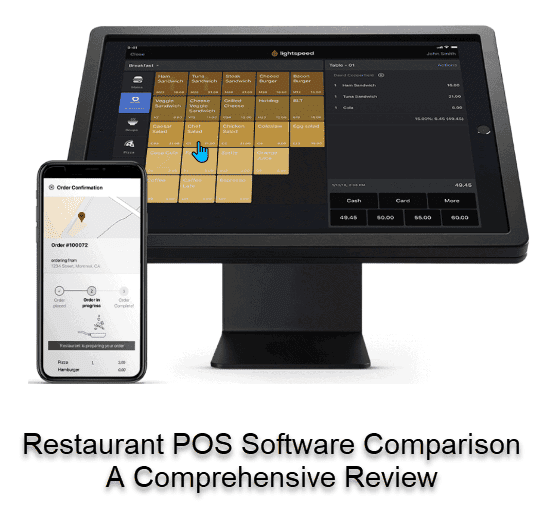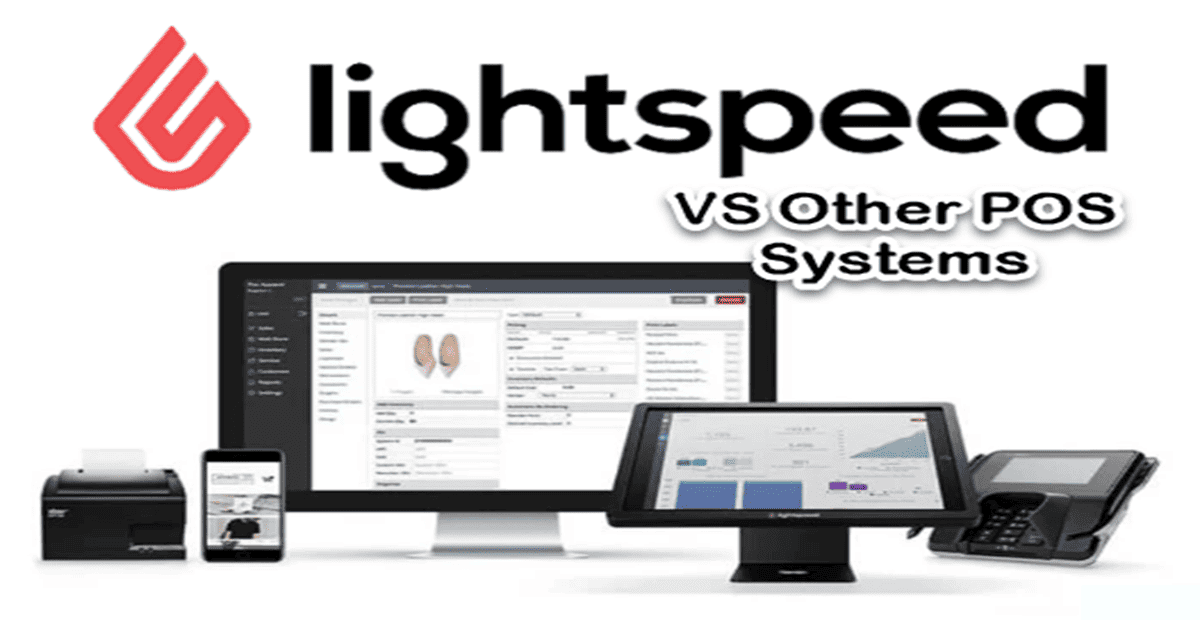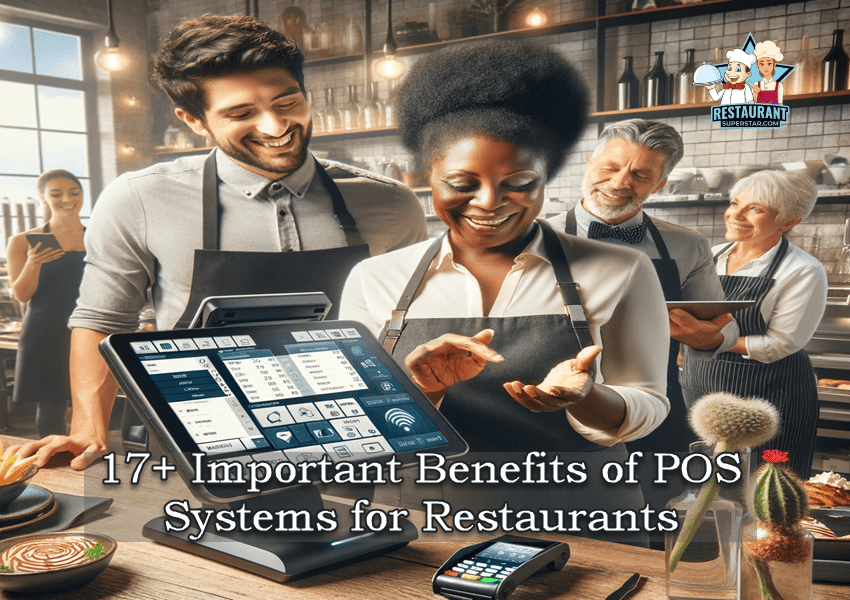Restaurant POS Software Comparison-A Comprehensive Review

Restaurant POS Software Comparison
As a restaurant owner or manager, you’re well aware of the many decisions that need to be made daily to keep your establishment running smoothly. One of the most crucial choices is selecting the right point of sale (POS) system to streamline your operations and maximize your profits.
When evaluating different restaurant POS software, you may become overwhelmed by the rising number of solutions available on the market.
That’s where this guide comes in. We’ve done the research for you, and in the following sections, we’ll dive deep into the world of restaurant POS systems.
Top POS Software for Restaurants
It’s important to become familiar with some of the leading competitors in the industry before you start your search for the ideal POS system for your restaurant.
To accommodate various restaurant kinds and sizes, each system provides a distinct set of features and advantages. Here is a brief overview of five popular restaurant POS software options:
a) Toast POS: Toast POS is a cloud-based, all-in-one system designed specifically for the restaurant industry. It offers an extensive range of features, including tableside ordering, online ordering, delivery, and inventory management. Toast’s intuitive interface and customizable options make it a popular choice for restaurants of all sizes.
b) Square for Restaurants: Square for Restaurants is a user-friendly, customizable, and comprehensive POS solution designed to streamline restaurant operations. With features like table management, menu management, and a built-in customer relationship management (CRM) system, Square is an excellent option for small to medium-sized restaurants.
c) TouchBistro: TouchBistro is a versatile and feature-rich restaurant POS system designed with ease of use in mind. It offers robust inventory management, detailed reporting, and seamless integration with third-party services. TouchBistro is suitable for all types of food service establishments, from cafes to fine dining restaurants.
d) Revel Systems: Revel Systems is a powerful, cloud-based POS solution that caters to various business types, including restaurants. Numerous services are available, including table management, internet ordering, personnel management, and reward programs. Revel Systems is known for its scalability, making it a great choice for growing restaurant businesses.
e) Lightspeed Restaurant: Lightspeed Restaurant is a versatile, cloud-based POS system that offers a plethora of features, including tableside ordering, inventory management, and employee scheduling. It is designed to improve efficiency and provide valuable insights to help restaurant owners make data-driven decisions.
These are few examples of the best restaurant POS software that is currently offered. Before choosing a system, it’s important to thoroughly analyze the particular requirements of your restaurant because every system has a different set of strengths and disadvantages.
Cloud-Based vs. On-Premise Restaurant POS Systems
Your first choice when selecting a restaurant POS system will be whether to go with an on-premise or cloud-based option. Both alternatives have pros and cons, so it’s important to compare them to the unique requirements of your restaurant.
Let’s examine how these two POS system kinds differ from one another.
Cloud-Based Restaurant POS Systems
Cloud-based POS systems store your data on remote servers, allowing you to access your system and data from any device with an internet connection. Some of the benefits of cloud-based solutions include:
- Easy updates: Cloud-based systems are automatically updated, ensuring that you always have the latest features and security patches without any manual intervention.
- Lower upfront costs: With a cloud-based POS, you generally pay a monthly subscription fee, reducing the initial investment required compared to on-premise systems.
- Scalability: As your restaurant grows, cloud-based systems can easily accommodate more locations, users, and features.
- Remote access: With cloud-based solutions, you can monitor your restaurant’s performance, manage inventory, and run reports from anywhere, anytime.
However, there are also some disadvantages to consider:
- Internet dependency: Cloud-based POS systems rely on a stable internet connection, which can pose a problem if your restaurant experiences connectivity issues.
- Ongoing costs: While the initial investment is lower, monthly subscription fees can add up over time.
On-Premise Restaurant POS Systems
On-premise POS systems store data on local servers at your restaurant location. Some advantages of on-premise solutions include:
- Greater control: Since the hardware and software are located on-site, you have more control over data security and system maintenance.
- Less internet dependency: On-premise systems are less reliant on an internet connection for day-to-day operations, making them a suitable option for restaurants with unreliable internet service.
However, on-premise systems also come with some downsides:
- Higher upfront costs: On-premise solutions often require a more significant initial investment for hardware, software, and installation.
- More maintenance: Keeping your system up-to-date and secure is your responsibility, which can be time-consuming and costly.
How to Decide Which Option is Best for Your Restaurant
When choosing between cloud-based and on-premise restaurant POS systems, consider factors such as your budget, internet connectivity, need for remote access, and preferences for control over the system.
Before selecting a restaurant, carefully weigh the benefits and drawbacks of each option because every business has distinct needs.
Customizable Restaurant POS Systems
Every restaurant has its own unique requirements, which is why it’s crucial to choose a POS system that can be tailored to suit your specific needs. Customizable restaurant POS systems offer flexibility, allowing you to configure the software to match your establishment’s workflow and preferences.
Let’s discuss the importance of software customization and explore some examples of how customizable POS systems can cater to different restaurant types.
Importance of Software Customization
A one-size-fits-all approach to POS systems is unlikely to work for most restaurants. By choosing a customizable POS system, you can:
- Streamline operations: Customize the software to match your restaurant’s unique workflows, reducing the learning curve for your staff and increasing efficiency.
- Enhance customer experience experience: Tailor the system to help you better manage customer preferences, allergies, and special requests, ensuring a positive dining experience for your guests.
- Stay adaptable: As your restaurant grows and evolves, a customizable POS system can be updated to accommodate new features, menu items, and integrations.
Examples of Customizable POS Systems for Different Restaurant Types
- Fine Dining Restaurants: Fine dining establishments require POS systems that can handle complex menu structures, including multiple courses, modifiers, and wine pairings. These particular requirements may be met by a flexible POS system, guaranteeing your customers a flawless eating experience.
- Quick Service Restaurants (QSRs): QSRs need a fast and efficient POS system that can handle high-volume transactions and manage limited-time offers. Customizable POS systems can be adapted to support rapid order entry, kitchen display systems, and loyalty programs tailored to QSRs.
- Food Trucks: Mobility and ease of use are crucial for food truck operations. A customizable POS system can be configured to accept mobile payments, track inventory in real-time, and integrate with third-party services like online ordering platforms.
- Coffee Shops: Coffee shops often require a POS system that can handle a wide range of beverage options, modifiers, and loyalty programs. Customizable POS systems may be configured to accommodate these particular needs, assisting you in effectively managing orders and retaining your consumers.
Choosing a customizable restaurant POS system allows you to create a solution that is perfectly suited to your establishment’s unique needs. As you evaluate different POS systems, prioritize those that offer customization options to ensure the best fit for your restaurant.
POS System Pricing and Packages
Budget is often a critical factor for restaurant owners when choosing a POS system. Understanding the pricing structure and various packages offered by different different POS software providers providers can help you make an informed decision and find a solution that fits your budget.
Let’s discuss the factors that can affect the cost of a POS system and compare pricing plans and packages for some popular restaurant POS POS systems.
Factors Affecting the Cost of POS Software
Several factors can influence the cost of a restaurant POS system, including:
- Type of System: Cloud-based systems typically require a monthly subscription fee, while on-premise systems often have a higher upfront cost for hardware, software, and installation.
- Hardware Requirements: The cost of hardware, such as POS terminals, cash drawers, barcode scanners, and printers, can add to the overall investment.
- Software Features: More advanced features and customizations may come at an additional cost.
- Payment Processing Fees: Some POS systems include payment processing, while others require a separate payment processor, which may have its own fees.
- Support and Maintenance: Ongoing technical support and software updates may incur additional costs.
Comparison of Pricing Plans and Packages for Popular Restaurant POS Systems
- Toast POS: Toast offers a range of pricing plans, starting with their Starter Plan at $69 per month, per terminal, plus payment processing fees. Their more advanced plans include additional features like online ordering, gift cards, and loyalty programs, with higher monthly fees.
- Square for Restaurants: Square offers a free plan for smaller restaurants, which includes basic POS features and payment processing. Their Plus Plan, priced at $60 per month, per location, includes additional features like menu management, inventory tracking, and advanced reporting.
- TouchBistro: TouchBistro’s pricing plans start at $69 per month for a single license, with discounts for additional licenses. Their plans include 24/7 customer support, and hardware is sold separately.
- Revel Systems: Revel offers custom pricing based on your restaurant’s specific needs. Their plans include features like inventory management, employee scheduling, and customer management. Hardware and payment processing fees are additional costs.
- Lightspeed Restaurant: Lightspeed’s pricing starts at $59 per month for a single register, with additional registers available at a lower cost. Their plans include features like menu management, tableside ordering, and inventory tracking. Hardware and payment processing fees are not included.
When comparing restaurant POS system pricing and packages, it’s crucial to consider the total cost of ownership, including hardware, software, payment processing, and support fees. Carefully evaluate the features included in each plan to ensure that you’re getting the best value for your investment.
Restaurant POS System Reviews
Reading reviews from other restaurant owners and managers who have used various POS systems can provide valuable insights into the pros and cons of each option.
Reviews can help you understand the real-world experiences of your peers, giving you a better idea of what to expect from different restaurant POS systems.
In this section, we’ll highlight some key takeaways from user reviews for the top five restaurant POS systems mentioned earlier in this guide.
Toast POS
Pros
- User-friendly interface that is easy to navigate for both front-of-house and back-of-house staff.
- Excellent customer support with responsive and knowledgeable representatives.
- Comprehensive feature set designed specifically for restaurants.
Cons
- Some users report occasional software glitches and system downtime.
- Payment processing fees may be higher compared to other options.
Square for Restaurants
Pros
- Simple and intuitive setup process, making it easy for new users to get started quickly.
- Affordable pricing, including a free plan for smaller restaurants.
- Seamless integration with other Square products and services.
Cons
- May lack some advanced features needed by larger or more complex restaurants.
- Some users report slow customer support response times.
TouchBistro
Pros
- Versatile and feature-rich, catering to a wide range of restaurant types.
- Seamless integration with third-party services, including payment processors and accounting software.
- Helpful and responsive customer support team.
Cons
- Some users report occasional software bugs and performance issues.
- May require a more substantial investment in hardware compared to other options.
Revel Systems
Pros
- Scalable solution that can grow with your restaurant business.
- Wide range of features and customizations to suit various restaurant types.
- Integration with popular third-party services and software.
Cons
- Higher upfront costs and custom pricing may make it less budget-friendly for smaller restaurants.
- Some users report a steep learning curve and complex setup process.
Lightspeed Restaurant
Pros
- Intuitive interface that is easy for staff to learn and use.
- Comprehensive set of features, including inventory management and tableside ordering.
- Flexible pricing plans to accommodate different restaurant sizes and budgets.
Cons
- Some users report occasional software glitches and slow system performance.
- Limited offline functionality, which may be problematic in the event of internet outages.
When reading reviews, keep in mind that every restaurant’s experience may vary. Consider the specific needs and priorities of your establishment when evaluating the pros and cons of each POS system. Don’t hesitate to request a demo or trial period to test the software yourself before committing to a particular solution.
Tips for Choosing the Right Restaurant POS System
Selecting the best restaurant POS system for your establishment can be a daunting task, but keeping a few key considerations in mind can help simplify the process.
Here are some tips to help you choose the right POS system for your restaurant:
Identify Your Needs and Priorities
Make a list of the features and functions that are most crucial to the functioning of your business before beginning your search. Consider factors like the size of your establishment, the complexity of your menu, and any unique workflows or requirements specific to your business.
Consider Your Budget
Determine a budget for your POS system, taking into account both upfront costs and ongoing expenses like monthly subscription fees, payment processing, and support costs. Look for a system that offers the features you need at a price point that fits your budget.
Research and Compare POS Systems
Spend time researching different POS systems and comparing their features, pricing, and customer reviews. Create a shortlist of systems that align with your needs and priorities, and take advantage of demos or trial periods to test each system hands-on.
Evaluate Integration Capabilities
Make sure the POS system you choose can integrate with the software and services you already use, such as accounting software, payroll services, and online ordering platforms. Seamless integration can save you time, reduce errors, and streamline your restaurant’s operations.
Assess Customer Support and Training
Choose a POS system that offers comprehensive customer support and training resources to help you and your staff get up and running quickly. Look for a provider that offers 24/7 support and a variety of training materials, such as video tutorials, webinars, and user guides.
Consult Your Peers
Talk to other restaurant owners and managers in your network to learn about their experiences with different POS systems. Ask for recommendations and gather feedback on the systems you’re considering.
Conclusion
In conclusion, choosing the right restaurant POS system involves careful research, evaluation, and comparison. By identifying your needs, considering your budget, and assessing factors like integration capabilities and customer support, you’ll be well-equipped to select a POS system that will help streamline your operations, and drive your restaurant’s success.
Jeff Smith is a Restaurant Consultant with over 20 years of hospitality experience ranging from server to owner and general manager. He focuses on Restaurant POS technology as well as restaurant marketing. Make sure to check out our world famous restaurant resources resources page for a comprehensive offering of hand picked resources and tools to help your business. You can also check out some of our other restaurant business articles.


